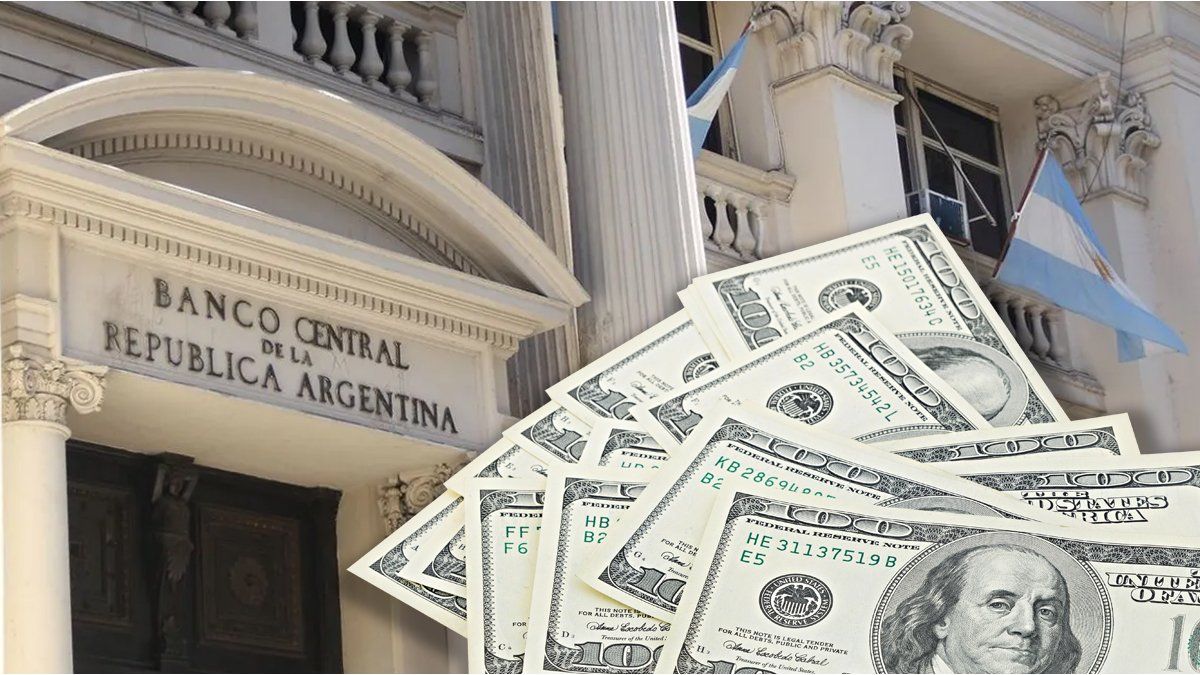While the economic discussion focuses on exchange appreciation and negotiation with the International Monetary Fund (IMF), almost silent incessant daily drip of private deposits in dollars. After the peak reached with the bleach of capitals, a dim but almost uninterrupted exit of currency of the system, which continues today. While the level is still high and the government values that the bulk of bleached money remains in the banks, The drainage to droppers has already taken 11.5% of the stock at the end of October.
According to the Central Bank data, to the February 10 (last available) The stock of private deposits in foreign currency was U $30,655 million. That day it dropped to US $121 million. So far this year, only in seven wheels there were no falls. In that period, US $ 896 million left.
But if the comparison is made with the last peak, the fall is even greater. On October 31, the maximum of US $ 34,626 million was reached. Days later, the first stage of money laundering ended, which was the available window to regularize cash. From that record, private deposits in dollars lost US $ 3,971 million, 11.5% of the total.
In principle, the amount may seem lower since, according to the data of the ARCA (former AFIP), more than US $ 23,000 million in cash entered the money laundering. However, The continuity of the drib.
image.png
Departure of deposits in dollars and impact on reservations
Since the end of October, the BCRA accumulates currency purchases in the official exchange market for just over US $ 4,500 million. However, gross international reserves have not been moved: They were US $ 28,618 million as of October 31 and were $ 28,938 million to February 10. In the middle, on January 7, the US $ 32,908 million came to play.
Why did the central purchases translated into accumulation of reservations? Without a doubt, One of the factors was deposit drainage. It is that an important portion of the banking placements in foreign currency of the savers is embedded in the coffers of the BCRA. When deposits are reduced, in general the lace also do.
Anyway, the indoor bleeding did not have all the impact it could have had on international holdings. It happens that, during laundering, the banks had a precautionary behavior and retained a good part of the dollars deposited in their branches, so the lace did not grow at the same rate. Thus, if at the time they did not impact so much upwards for the reserves, now they do not do so down.
Of course there was Other factors They impacted. According to the data shown by the vice president of the BCRA, Vladimir Werning, Between the end of October and half of January, the BCRA used almost US $1 billion of reserves to intervene over parallel dollars and contain the exchange gap. Almost all, concentrated between mid -December and January 16. There are still no data available for what happened, however, market sources estimate that The central remained active in the last days. That is what debt payments are added to the bonds, to the IMF and the holders of Bopreal.
Dollars in dollars and exchange strategy
There is another effect of the departure of deposits in dollars, which in the future could affect the government’s strategy to sustain its scheme of exchange appreciation. The thing is The increase in the deposited currencies left by money laundering was the ceiling that supported the credit boom in foreign currency to companies. If the deposit stock is reduced, the presentable capacity could find a limit.
During the last months, the economic team encouraged this type of loans (through the incentive to the “carry trade”) and used it as the main strut so that the BCRA can continue buying dollars Despite the persistent exchange current account deficit. It happens that dollar financing (banking and through the capital market) is liquidated against pesos in the official market and increases the foreign exchange offer.
Amílcar CollanteEconomist of Profit Consultores, said that the persistence of the departure of deposits in dollars “Could limit credit expansion in foreign currencywhich is the one that is supplying the offer in the Mulc ”.
However, Collante marked some mitigating about the risk for reserves. “In the coming months the thick harvest enters. And it is possible that the BCRA, even with less margin of the expansion of credit, increases the surplus of the balance of goods. That is, a more balanced current account and lower financial account increase. ” And he added that the fact that, until July, there are no large expirations of external debt will take some relief to the checking account on the side of the interests: “That also gives greater margin so that the BCRA accumulates reservations.”
The truth is that the shortage of currencies is today the main concern of the government, which insists on sustaining its exchange scheme to contain inflation. In fact, in net terms and measures with the IMF methodology, Reservations are negative at almost US $ 10,000 million.
Source: Ambito
I am an author and journalist who has worked in the entertainment industry for over a decade. I currently work as a news editor at a major news website, and my focus is on covering the latest trends in entertainment. I also write occasional pieces for other outlets, and have authored two books about the entertainment industry.




